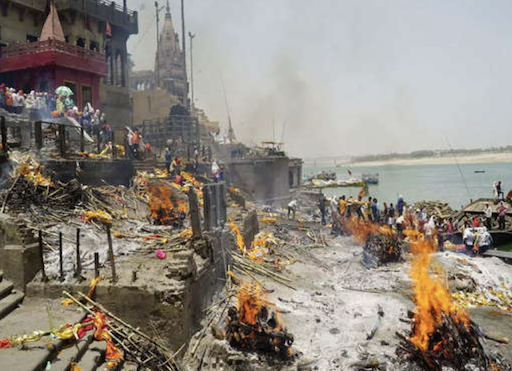Manikarnika Ghat stands as a timeless testament to the rich tapestry of Hindu mythology and spirituality, nestled along the ancient banks of the Ganges in Varanasi. This revered ghat, mentioned in historical records dating back to the 5th century, holds profound significance in Hinduism. Legend has it that Manikarnika Ghat’s origins trace back to a divine tale of sacrifice and rebirth. When Mata Sati, also known as Adi Shakti, immolated herself in grief after a conflict involving Raja Daksh Prajapati and Lord Shiva, her burning body was carried by Shiva to the Himalayas. In a gesture of compassion, Lord Vishnu intervened, sending his Divine chakra to disperse Sati’s body into 51 parts, which fell to earth as sacred Shakti Peeths. Manikarnika Ghat, where Mata Sati’s ear ornament fell, thus earned its status as a revered pilgrimage site. Today, this ghat continues to draw devotees and seekers alike, offering a timeless connection to Hindu spirituality and mythology.

Varanasi is revered as one of the oldest continuously inhabited cities in the world, its very heart pulsating with the essence of Hinduism. For Hindus, cremation in Varanasi is a sacred rite believed to facilitate Moksha, the liberation from the cycle of reincarnation. It’s a deeply philosophical view of death, where the soul transcends to join the universal consciousness. This perspective starkly contrasts with Western notions of death, where discussions are often avoided, and the desire for an afterlife prevails.
A team of filmmakers from the USA and Canada, inspired by the Hindu perspective on mortality, journeyed to Varanasi to explore this profound theme. Their quest led them to interview a diverse array of individuals, from Sanskrit scholars to holy men, workers at the cremation ghats, and grieving family members. Through their film, they sought to delve deeper into the human experience of mortality and uncover pathways to reconcile with this universal inevitability. Their endeavor not only sheds light on the rich tapestry of Hindu beliefs but also serves as a poignant reminder of the complexities and profundity of the human condition.















